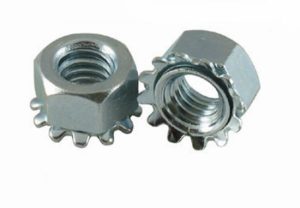Understanding Press Fit Studs
Press fit studs offer a robust solution for creating secure, threadless connections in various manufacturing and engineering applications. These components rely on interference fits to maintain a tight bond between mating surfaces without the need for welding or threading.
Design Considerations
When designing with press fit studs, engineers must account for several critical parameters to ensure optimal performance and longevity.
Material Compatibility
Selecting compatible materials for both the stud and the host component is crucial. For example, using an M8 304 Stainless Steel press fit stud in an aluminum housing might present challenges due to differential thermal expansion rates. Engineers should aim for materials with similar thermal expansion coefficients to prevent loosening over time.
Dimensional Specifications
The dimensions of a press fit stud directly impact its performance. The ideal size for a stud depends on its application but generally ranges in diameter from 3 mm to 20 mm, with lengths varying based on the depth of the host material. Precision in these measurements is paramount, with tolerances as tight as ±0.02 mm to ensure a secure fit.
Performance Metrics
Evaluating the effectiveness of a press fit connection involves several performance metrics, including:
Holding Power
The holding power of a press fit stud depends on the interference fit's tightness. A typical M8 stud can sustain loads up to 5,000 N without loosening, making it suitable for high-stress applications.
Installation Speed
Speed is a significant advantage of using press fit studs. Installation typically takes a few seconds per stud, contributing to efficiency in assembly processes. This rapid pace does not compromise the connection's reliability, provided the installation tools apply consistent force.
Cost Efficiency
Press fit studs offer a cost-effective alternative to traditional fastening methods. The absence of threading or welding processes reduces manufacturing costs. For instance, the total cost of installing a press fit stud, including the hardware and labor, can be as low as $0.50 per unit, making it a budget-friendly option for large-scale projects.
Lifespan and Durability
The lifespan of a press fit connection can exceed 20 years under normal conditions. This durability stems from the lack of movable parts and the resistance to loosening under vibration. Stainless steel studs, like the M8 304, are particularly resistant to corrosion, further extending their service life.

Advantages and Limitations
Advantages
- Quick and Easy Installation: Simplifies assembly processes, saving time and labor costs.
- High Strength and Reliability: Ensures a secure connection capable of withstanding significant loads and vibrations.
- Cost-Effectiveness: Reduces overall project costs by eliminating the need for complex machining or welding.
Limitations
- Precision Requirements: Requires exact dimensional specifications for both the stud and the hole, demanding high manufacturing accuracy.
- Material Restrictions: The choice of materials for both the stud and the host component is critical to avoid galvanic corrosion or differential thermal expansion issues.
Conclusion
Press fit studs represent a versatile and efficient solution for creating secure connections in a wide range of applications. By carefully considering design parameters and performance metrics, engineers can leverage these components to achieve reliable and cost-effective assembly outcomes.
